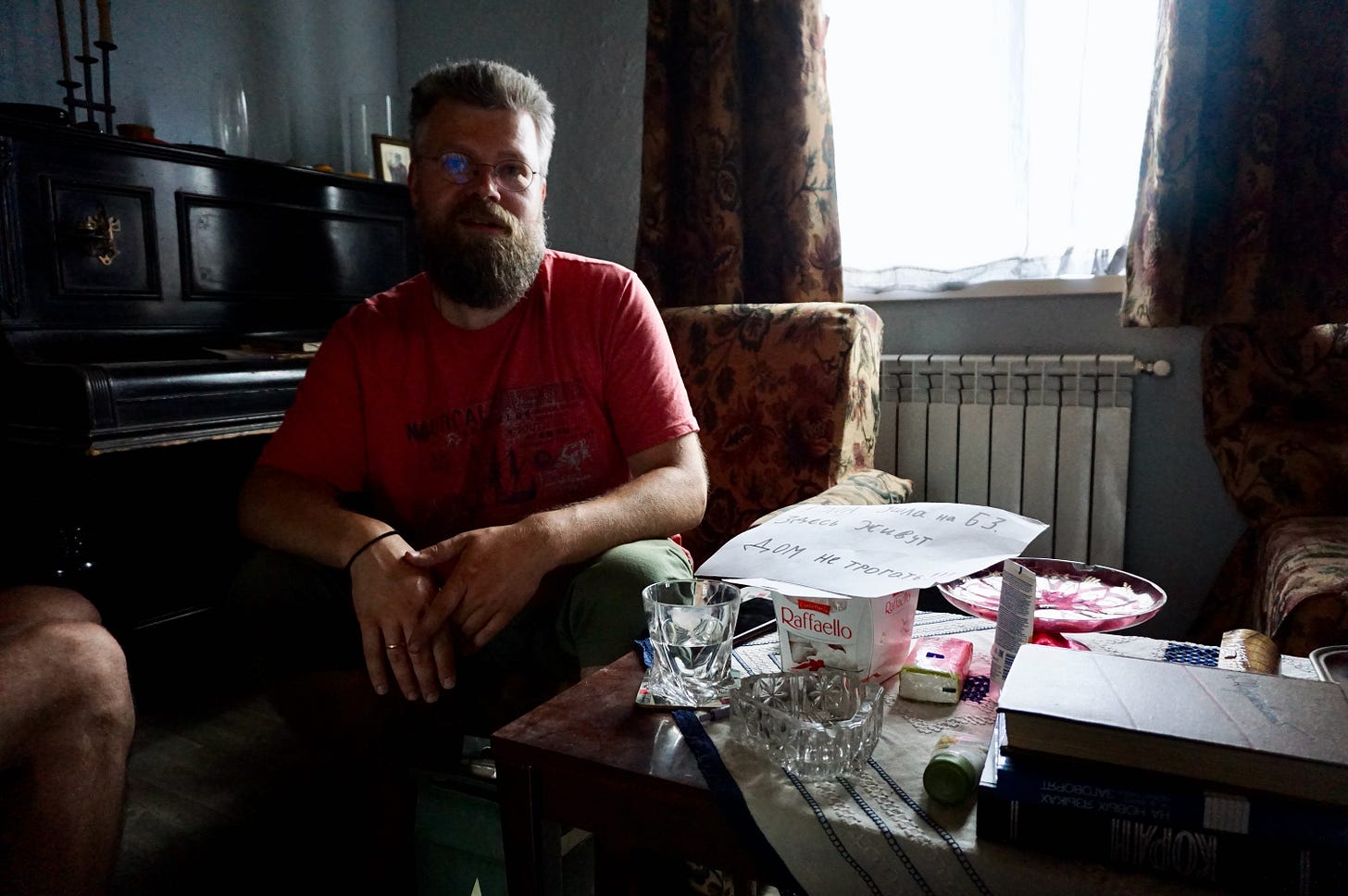Russian bumbling and a tale of two priests
They’re leaving behind valuable military documents, and other things that make no sense.
Journalism is too opaque and misunderstood. Chills gives a behind-the-scenes look at how dangerous investigative journalism gets made.
KYIV — Andriy Dudchenko has a cat called Tzimmes, which is the name of a traditional Jewish dish eaten on Rosh Hashanah. It’s also a Yiddish word that means “to make a big fuss.” And in today’s case, it is the name of an orange tabby that belongs to a Ukrainian Orthodox priest who lives in the suburbs northwest of Kyiv.
Dudchenko, in a pink shirt and shorts, finds his cat’s name very funny. He is also proud that he has another one named “Khatool,” or, “cat” in Hebrew. We’re sitting in Dudchenko’s living room with his wife, Polina, as he describes what it was like to live under Russian occupation for 16 days, which meant hiding under his house in a freezing-cold, cement basement.
Like everyone I’ve spoken to in formerly Russian-occupied areas of Ukraine, he describes how the Russians looted his house, eating anything in sight and taking everything from electronics to fishing poles. Dudchenko laughs as he says that he had left a Robert Heinlein book in Russian on his coffee table — the soldiers took that too.
“They ate every scrap of food,” he says, marveling at the totality of the looting.
One nurse, who survived the massacre in nearby Bucha, told me that she had watched the Russians drive away with everything they could fit into an industrial Ukrainian truck normally used to transport frozen chicken.
The Russians have also left a few things behind.
Keep reading with a 7-day free trial
Subscribe to Chills, by Lauren Wolfe to keep reading this post and get 7 days of free access to the full post archives.




